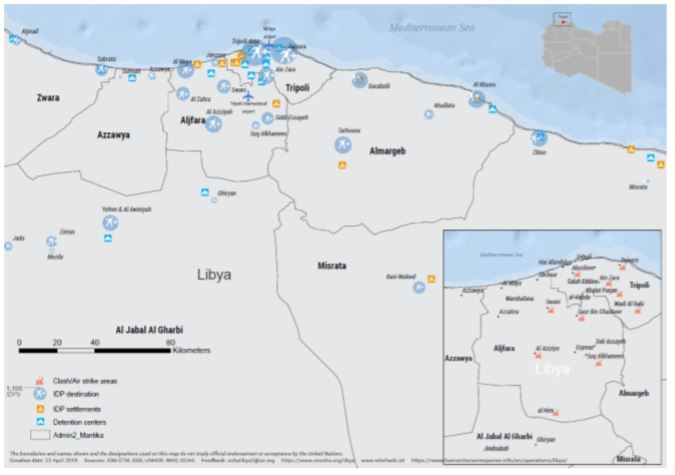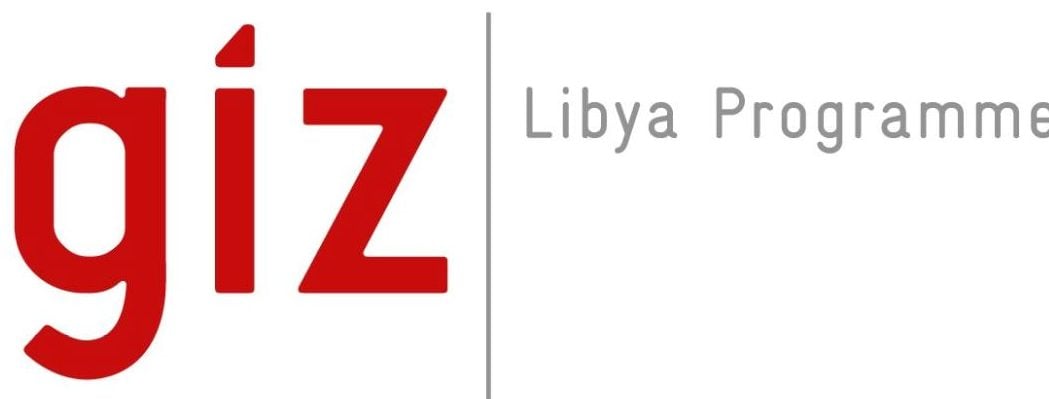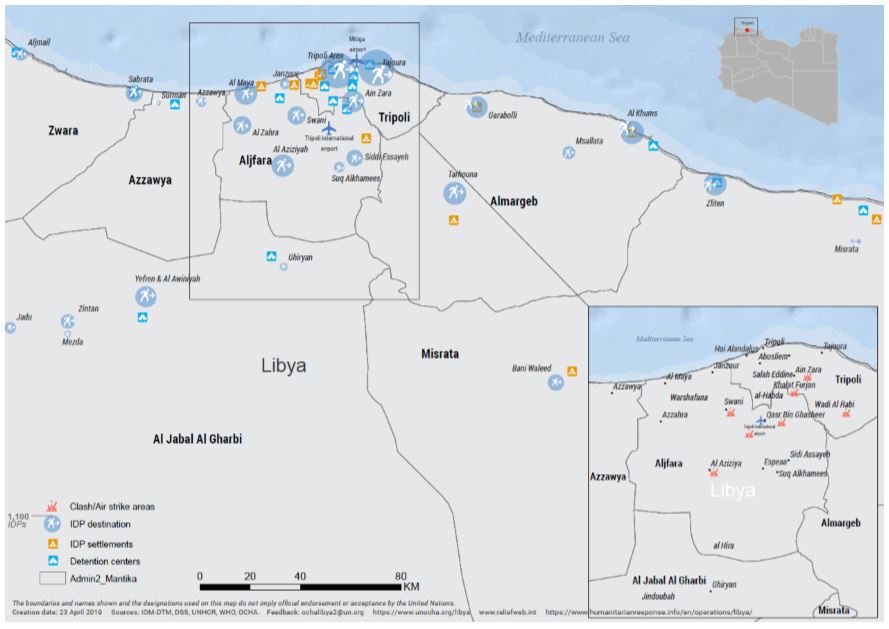By Sami Zaptia.

London, 23 April 2019:
After three weeks, armed conflict continues across multiple areas, including Khallat Al Furjan and Ain Zara, south west and south of Tripoli, the UN Office for the Coordination of Humanitarian Affairs (OCHA) says in its latest report.
This comes as the World Health Organization (WHO) reports that the latest death toll reached 264 and the wounded count reached 1,266 as a result of the fighting. WHO called for the temporary cessation of fighting and the respect of international human rights.
The Faiez Serraj government official spokesperson, Muhanad Younis, said yesterday that the states that are supporting the ‘‘criminal Hafter’’ aim to return dictatorships and do not want freedom for people. He did not mention them by name, but the accepted popular wisdom in Libya is Egypt, UAE and Saudi Arabia.
On the battlefield, the official Spokesperson for the Serraj Ministry of Interior claimed that the areas from Wadi Rabea to Aziziya, south west and south of Tripoli, were all ‘‘liberated’’ from Hafter forces. He said that Hafter and his forces want to destabilize Tripoli and show that the Serraj government is incapable of securing the capital.
The Libyan National Army (LNA) official Spokesperson, Ahmed Mesmari, meanwhile, claimed that new troops from Zintan were joining the battlefront. There are also unconfirmed reports of other LNA-aligned troops from the south joining the fighting.
Whilst the sandstorm meant that there were no air raids reported yesterday, today, Mesmari claimed that the LNA defences repelled an air raid by pro-GNA fighter jets on the Jufra (central Libya) airbase, downing one and forcing the other two to flee. The Serraj government denied it had lost a jet fighter.
Meanwhile, Tripoli’s only functioning passenger airport, Mitiga, announced that it was now operating normal hours after having had restricted flying ours from 5pm to 8am.
On the humanitarian front, the OCHA report says that a marked increase in precision airstrikes has been reported over the past few days in Abu Sleem, Wadi al-Rabia, Swani, Ain Zara and in the vicinity of Tripoli International Airport.
OCHA says that as a direct result of armed conflict, the humanitarian situation continues to deteriorate. On the ground, frontlines have largely remained static and the number of ground engagements and intensity of rocket/mortar attacks has reduced from previous days. At least 89 civilian casualties, including 20 fatalities, have been verified since the beginning of the conflict, with no new casualty figures verified in the past 48 hours. It adds that verified casualty numbers always represent the absolute minimum, and that unconfirmed numbers could well be higher. These casualties include medical personnel, women and children, and at least one refugee/migrant.
The report says about 34,100 people have been forced to flee their homes, while an unconfirmed number of civilians remain trapped in conflict-affected areas. Trapped civilians are either unable to flee due to conflict dynamics or unwilling to leave due to fear of looting of their premises due to perceived political affiliation. This includes nearly 3,600 refugees and migrants who are located in Detention Centres in conflict-affected areas or areas in close proximity to clashes.
Refugees and migrants in urban settings report face discrimination with regards to their access to collective shelters, with reports of them being routinely requested to provide health certificates as a pretext for denying them access to collective shelters. In response, a dedicated collective shelter under the supervision of the Libyan Red Cross has been set up in a school building in downtown Tripoli to receive exclusively refugees and migrants.
Humanitarian partners continue to advocate for the rights of refugees and migrants regarding their safe and unimpeded access to shelter space and access other life-saving assistance.
Nearly 3,600 refugees and migrants remain trapped in detention centres (DCs) that are in conflict-affected areas or in areas at risk of armed conflict. Beyond the threat posed by ongoing fighting, refugees and migrants in some DCs face dire living conditions, with the lack of food being of particular concern. A solution to the breakdown in food provision at DCs has yet to be found, since the companies contracted by local authorities to provide food to the affected DCs have ceased deliveries due to the security situation, the report said.
In some DCs the water sanitation and hygiene situation is extremely poor and some have been without drinking water for several days. Further reports were received that armed forces are currently located inside the Gharian DC, increasing the protection concerns faced by the civilians detained there. Ambulances are reportedly refusing to attend to medical cases in some DCs, the report says.
Medical facilities and personnel continue to be subject to indiscriminate shelling, the OCHA report says. To date three health workers (two doctors and one ambulance driver) have been killed and one doctor injured. These incidents further hamper the ability of already overstretched health services to provide vital assistance to civilians, including those inured as a result of armed conflict, the report adds.
The report says that 34,100 displaced individuals have been identified since the onset of the crisis, including an increase of nearly 1,800 IDPs whose displacement has been recorded within the last 48 hours. The majority of IDPs are staying with family or in private accommodations, while over 2,200 IDPs are currently sheltered in 16 collective centres set up by local authorities. To date, approximately 20,800 people received humanitarian assistance and protection by the international humanitarian community and its local partners, the OCHA report says.










